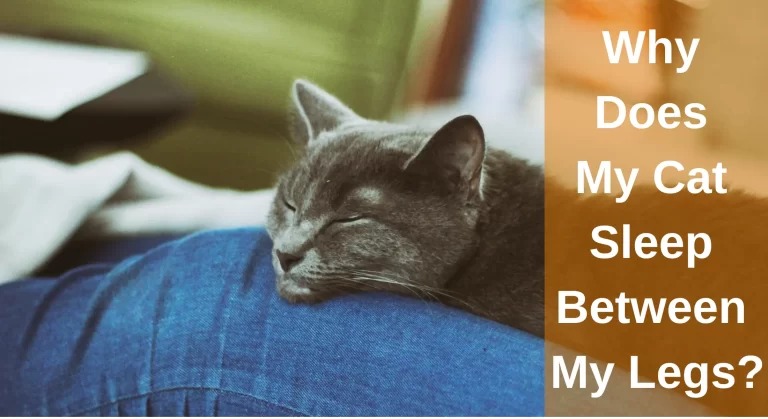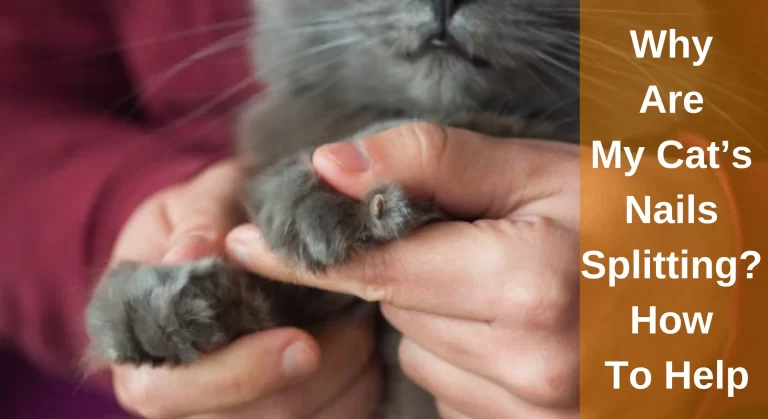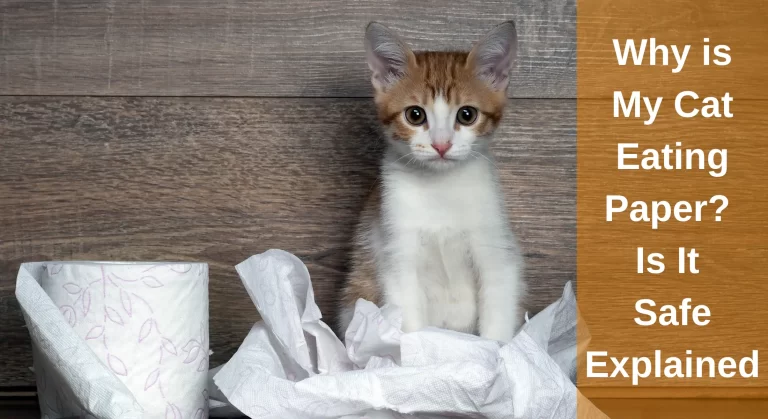Cat Suddenly Limping on its Back Leg – Reasons And What Should I Do?
If only our pets could talk to us, that would make life easier in many ways. If you suddenly notice your cat limping, it is definitely in pain, even if it seems normal otherwise. To help your feline friend, it is essential to identify the source of the suffering.
Cat suddenly limping on its back leg why? Your cat is probably limping due to injury or pain in its back leg. It could have an ingrown claw, a wound, or a sprain. This article is all about the different kinds of limb injuries in cats, their causes, and how you can help your furry friend.

Why is My Cat Limping on Its Back Legs?
If your cat is limping and walking weirdly, they are doing it out of discomfort. Your cat will adjust its gait to one which is the least painful for it. In most cases, your cat limping generally means there has been some insult or trauma to its legs. The following are some types of injuries your cat could have:
1. Nail Infection
If your pet’s nail is infected, the inflammation and pain prevent it from putting its body weight on its hind legs, which leads to limping. The most common nail infectis your feline could have are:
- Paronychia: This is an infection of the nail bed, which causes surrounding tissue to become swollen, red, and painful. An abscess may develop underneath the nail.
- Onychomycosis: This is a nail-specific fungal infection. Caused by the fungus trichophyton mentagrophytes, it causes yellow discolouration of the nail and inflammation.
Onychomycosis is easier to treat; your pet will simply prescribe a suitable antifungal for your cat. Paronychia is a deep-tissue infection that may also require incision and drainage.
2. Ingrown claws
Similar to ingrown nails in humans, ingrown claws occur when the nail grows so long that it turns on itself and grows into the paw pad, puncturing the skin and causing severe pain and inflammation. Ingrown claws leave cats more susceptible to paronychia and onychomycosis. This is a progressive condition where you may notice subtle limping at first, and then the limping gets worse day by day as the nail further punctures your cat’s paw.
Wild cats don’t suffer from this issue as they use their claws for scratching, catching, and tearing apart prey. This use of claws keeps them naturally filed down. Domesticated cats have a more sedentary lifestyle, so their claws continue to grow, resulting in ingrown claws.
If you notice your cat has an ingrown claw, book an appointment with your vet immediately, as delaying this matter will only worsen. After that, clip your cat’s claws regularly to prevent it from happening again.
Also Read: Overgrown Cat Claws: Do Overgrow Nails Hurt Cats
3. Something Stuck in Your Cat’s Paw
If your cat is limping, you should check its paw. Chances are there is an object stuck there. Cats walk on all types of surfaces, and it’s not like they have shoes to protect them from sharp things. So you may find a piece of metal or a shard of glass piercing your feline’s paw, resulting in pain with every step.
If you do find the object and your cat is cooperative, you can pull it out with tweezers, and your cat should heal on its own in a couple of days. However, if your cat is not letting you touch its paw, or you think you can’t get it out, it’s best to consult a vet.
4. Wounds and Burns
Your cat might have stepped on something sharp, causing a deep penetrating wound into your cat’s paw. This can cause bleeding, redness, inflammation, and infection. Alternatively, if your cat stepped on something scorching hot like the stove, it could have burned its paw. Depending on how severe the condition is, there are various degrees of burns:
- First degree: You will find redness. Your cat will be in pain and will be limping. Some of its hair might have been burned off.
- Second degree: You will discover blisters in the area of injury. Your cat will have a greater limp.
- Third degree: Your cat’s skin and tissue will all be charred. Its paw will be black, and its fur will be completely burned off.
If your cat has been burned, it’s best to take it to the vet.
5. Fractures and sprains
If you cannot find a wound or an ingrown nail, there is a chance that your cat has broken a bone or sprained its ankle. Some evident signs of bone fracture are:
- Unable to put weight on the leg
- Being aggressive when someone tries to examine the leg
- Meowing, hissing, and making painful sounds
- Swelling of the leg
- Behavioural changes
If you suspect this, consult a vet. Your vet will take x-rays of its leg. If they find no finding, it’s probably a sprain and will heal with rest and time. Your vet might prescribe anti-inflammatory medications and painkillers for your cat. If there is a fracture, your cat might need a splint to allow proper alignment of fractured parts and ideal healing.
6. Other Animal Attacks
Cats get territorial about their area and attack when they feel threatened. If your pet gets in a fight with a stray animal, it can get scratches and bites on its body and legs, causing a limp. Just like a puncture wound from an object, an animal bite can also cause infection. If your cat gets a fever after getting injured and is suddenly weak, this is a sign of infection. It’s best to take your feline friend to the vet.
What Should I Do if My Cat is Limping Suddenly? / How Can I Treat My Cats Limping at Home?

You must take a close look at your cat’s leg if you see it limping. If the incident is fresh, your cat might be aggressive and will not let you touch its leg. You will need it to calm down first, then take a thorough look.
There are some first-aid things you can do:
- Wash the wound with cat soap. If there are any splinters stuck inside your cat’s paw, remove them with a tweezer.
- If there is continuous bleeding, you need to apply pressure on it. Applying pressure with a clean cloth will encourage the clotting of the wound.
- If the wound does not clot in 15 minutes, take your cat to the vet in an emergency, as constant bleeding will eventually be fatal.
- Once you have cleaned your pet’s wound, you can apply a cat ointment on the affected area, and then wrap it in a loose bandage.
- You will need to change your pet’s bandage every day. If you notice pus while changing bandages, your cat will need veterinarian treatment.
Also Check Out: Do Cats Make Weird Noises When Sick?
When Should I Take My Cat to The Vet For Limping?

You can easily manage small abrasions at home. For the following scenarios, a visit to the vet is necessary:
- You are unable to remove the object lodged into your cat’s paw: It is possible that the object is deeply embedded. In this case, only a vet can handle this situation professionally, and it might need to be done under sedation.
- The wound won’t stop bleeding: If you have applied constant pressure on your feline’s wound, but the bleeding won’t stop, you need to rush to the vet as your cat can bleed out. In this case, your cat will need stitches.
- Your cat has a broken bone: If your cat has a fracture, it will need a cast for proper alignment of its bones.
- You notice pus while cleaning the wound: Pus is a sign of an infected wound. Your vet will prescribe antibiotics for your cat and, if needed, will debride the wound.
- The skin is not healing three to four days after the injury: If the wound is still gaping despite your best efforts to help it heal, your cat might need stitches, for which you will need to take your feline to the vet.
- You notice discolouration of the paws: Your cat could have problems with blood circulation, due to which blood does not properly reach the extremities. This is an illness separate from injury and needs to be adequately examined by the vet.
- Your cat is aggressive: Your feline may be in too much pain and not allow you to even touch its leg. It will hiss at you and exhibit aggressive behaviour to keep you away. In this case, it can only be examined and treated under sedation.
- You do not want to treat it yourself: If you are squeamish or concerned about your cat’s wellbeing, there is no harm in making a trip to the vet to get professional help.
Frequently Asked Questions Cat Suddenly Limping on its Back Leg
The Bottom Line on
Our cats have our hearts, so seeing them limp is incredibly heartbreaking and concerning. You need to approach the matter gently, as your cat may not let you touch its leg if the wound is fresh and extremely painful. In most cases, a vet will need to take a look at your cat’s leg.
Who is Isabella?
My name is Isabella, and I am a dedicated and knowledgeable cat enthusiast. With years of experience caring for cats and a deep love for felines, I made a mission to help other cat lovers navigate the challenges of cat ownership.






